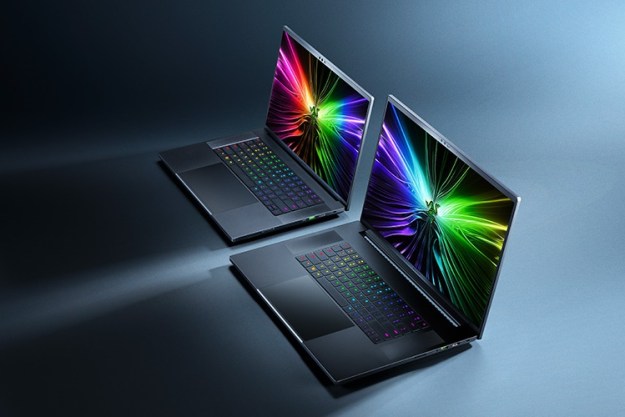Updated 2/4/2015: We stated previously this model was the first from Razer to use IGZO panel technology. In fact, Razer started to use that technology with the 2014 edition.
Razer’s super-slim gaming laptop, the Blade, has just received an update to the latest mobile hardware from Nvidia. Gamers will now find a GTX 970M with three gigabytes of memory revving under its hood.
The last generation of the Blade had a GTX 870M. While that chip was quite powerful, it has nothing on the new 970M, which is both quicker and more efficient than its predecessor. Razer’s laptop has come a long way over the years; the original had a GT 555M.
Related: Nvidia’s GTX 980M is the most impressive mobile GPU yet
While the GPU is receiving a big update the processor, an Intel Core i7-4720HQ, is a smaller move forward. Intel hasn’t yet introduced 5th-generation quad-cores, so the 4th-gen Core is still the processor of choice. It is a move forward, though, as it’s quicker than the i7-4702HQ from previous years. The maximum Turbo Boost has bumped from 3.2GHz to 3.6GHz.
Display resolution stays the same at a stunning 3,200 x 1,800 pixels. That works out to about 260 pixels per inch, 40 more than a MacBook Pro with Retina display, and beyond the limit of what an average person can appreciate at the Blade’s normal working distance. In other words, the Blade’s pixels are virtually invisible.
Razer says the 14-inch blade will weigh about four and a half pounds and be a seventh of an inch thick. These specifications are the same as the previous model; this is a hardware update, but the chassis is the same. Gamers can customize the system with up to 16GB of RAM and up to 512GB of solid state storage. Other notable features include 802.11ac Wi-Fi, a 70 watt-hour battery and three USB 3.0 ports.
Pricing will start at a dollar short of $2,000. That’s a lot of money, but the Blade has never been cheap. Excited gamers can pick it up from Razer’s or Microsoft’s online store immediately, and select Microsoft retail locations will carry it beginning February 16th.
Editors' Recommendations
- You can still buy the M1 MacBook Air, and it’s cheaper than ever
- One of Razer’s best gaming laptops is $400 off right now
- 2 gaming laptops you should buy instead of the Razer Blade
- Razer Blade 14 gaming laptop with an RTX 3080 Ti is $1,500 off
- This Razer gaming laptop with an RTX 3070 Ti is $1,600 off


